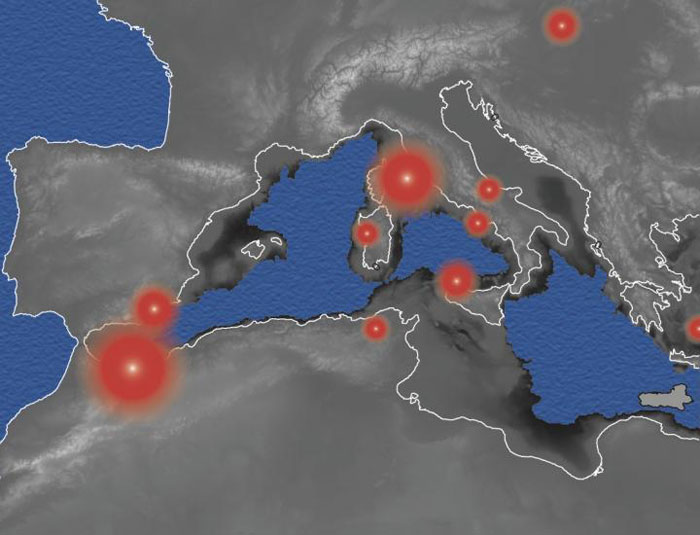The grim predictions of climate change envisage a sweltering future where rising seas swallow the land – but in Earth's ancient past, receding waters may have triggered a different kind of hell.
A monumental drying out that took place more than 5 million years ago caused the Mediterranean Sea to literally evaporate – and scientists now think this could have inadvertently spurred an excess of volcanic activity in the region.
This episode – known as the Messinian Salinity Crisis (MSC) or the Messinian Event – occurred sometime between 5.96 to 5.33 million years ago, when the Mediterranean Sea became cut off from the Atlantic Ocean.
Without a fresh, replenishing supply of water, the Mediterranean underwent a massive desiccation, resulting in the entire basin virtually emptying in the space of a thousand years.
According to a team led by researchers from the University of Geneva (UNIGE) in Switzerland, this mass exodus of water wouldn't have gone undetected by volcanic regions located around and underneath the Mediterranean.
"We understand that what happens at the Earth's surface, such as a sudden sea level lowering, causes the pressure to change at depth and has an effect on magma production," says one of the UNIGE researchers, structural geologist Pietro Sternai.
During the Messinian Salinity Crisis, the team suggests there were approximately 13 volcanic eruptions around the Mediterranean basin, based off evidence of crystallised minerals from cooled magma.
This level of volcanic activity is more than twice the average activity that would be expected in the region during the time period, the researchers say, and they think they have an explanation for the surge.
"The single logical explanation is the hypothesis that the sea dried out, since this is the only event powerful enough to alter the Earth's pressure and magmatic production over the entire Mediterranean," says Sternai.
That's because, with so much less water occupying the Mediterranean basin, the pressure on the surrounding land would have significantly decreased – resulting in a phenomenon called lithospheric unloading, in response to the lightening.
The effect of so much weight being lifted would have caused the Earth's crust to flex, which could have spurred magma production in less pressurised volcanic chambers – according to the team's modelling.
"The simulations showed that the only way to account for the proven increase in volcanic activity was that the level (and thus the weight) of the Mediterranean Sea dropped by about 2 kilometres (1.2 miles)," says Sternai.
Such an intense hollowing out would have completely redrawn the contours of the Mediterranean coastline, as you can see in the illustration below.
In the image, the white line is today's coast, surrounding the shallow blue puddle of Mediterranean Sea as it may have looked during the Messinian Salinity Crisis:
 UNIGE
UNIGE
The red circles represent volcanic regions in the surrounding terrain, and the size of the red circles highlights the comparative extent that magma production is estimated to have been affected the effects of dessication.
It's a remarkable hypothesis, but not one without precedent.
While we usually think about how volcanoes can influence climate change, scientists say the reverse is also possible, when monumental environmental shifts caused by changes in temperature make the Earth's crust bend.
When this happens, magma can end up being squeezed out of the chambers it's contained in, "like toothpaste out of a tube" as geophysicist Steve McNutt of the University of South Florida once put it.
If Sternai and his colleagues are right, such a variation is what roused otherwise dormant volcanoes on Earth millions of years ago to spew their fiery destruction – yet another salient reminder that we humans should never underestimate the sweeping, unforeseen effects of changes in our climate.
The findings are reported in Nature Geoscience.
